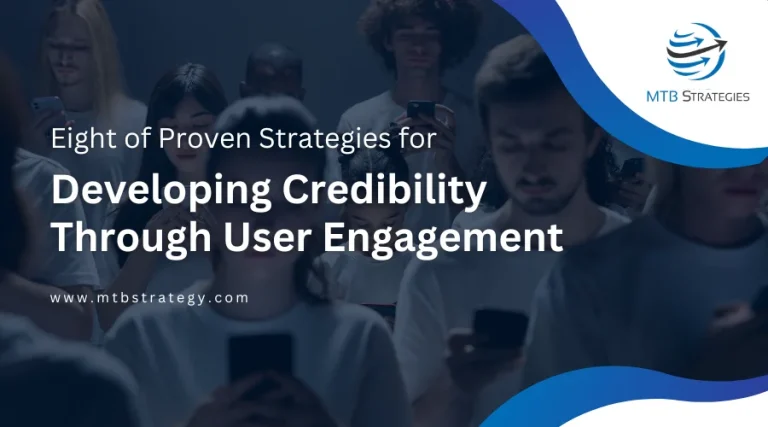Your offer is intriguing, your CTA is compelling, and your customer messaging is excellent. You run effective marketing campaigns that entice viewers and prompt clicks. However, the conversion rate of your landing page for lead generation could be better.
Why don’t page visitors turn into potential leads, subscribers, or buyers?
Lead generation marketing can significantly benefit from high-converting landing pages. This is particularly true for marketers who market expensive goods or services. Fortunately, the answer is surprisingly easy.
If you need help attracting customers, look over our blog on how to generate leads. Continue reading to find out exactly how to design a landing page for lead generation that is effective.
How Does Landing Pages Affect Lead Generation?
This window between drawing a customer in and completing the sale is crucial for organizations with lengthy sales cycles.
The conversion process starts on a lead capture page. You can bring a potential lead throughout the sales cycle once you have collected the visitor’s contact information.
Forms should ideally be as brief and straightforward to complete as feasible (we’ll explain why later). Consider gathering more personal data to produce more specialized content. You could grasp your contact list better if you knew its phone number, job description, budget, a timetable for need, number of users, or firm revenue, for instance.
Best Practices for Lead Landing Pages
Your digital marketing performance depends on high-quality traffic that converts, regardless of whether your company focuses on e-commerce, SAAS, or B2B lead generation. You will get a good return on investment from your social media, organic search, and email marketing initiatives with an effective landing page design.
Make your landing pages as effective as possible by following these best practices.
1. Good Landing Page Design
Lead generation landing pages use language and design decisions to quickly draw in visitors and keep them moving toward the conversion event, which is often a form submission. They ought to be able to recognize the essential ideas straight away and be inspired to read more, sign up, or download them right away. Now is the perfect time to make wise design decisions.
Ensure that the landing page’s design matches the rest of your brand.
And always aim for a lot of white space—it’s a cardinal rule of good design. Allow room for your content, graphics, videos, and CTA buttons to stand out against a transparent, uncluttered background. Make sure your writing has titles that stand out and is simple to scan. Utilize H2s, graphics, bullet points, and calls to action to break up long paragraphs of text.
2. Different Landing Pages Per Audience
Lead-generating and “core” website pages differ because lead-capture landing pages are created for particular target segments. A website often has many pages designed for its whole audience. For instance, you wouldn’t make a second homepage.
Create distinct lead capture landing pages for various target personas and audience groups as necessary. To keep the process scalable, use web page templates, though. You could construct individual landing pages for each acquisition channel if the channel itself or your messaging inside it is distinctive.
Combine it with a focused new customer acquisition plan to ensure that each page reaches the segment for which it is designed. Conduct keyword research to find the keywords that a specific market segment might use. Then, make the page keyword-optimized.
Create a sponsored search campaign based on the exact keyword phrases. Start an advertising campaign on websites with a specific audience in mind or via audience targeting using a DSP. Additionally, you can use LinkedIn and Facebook ads’ robust segmentation features to execute campaigns customized to each audience group.
3. Capture User Interest
It used to be recommended for web page design best practices to keep CTAs and critical information above the fold. Nowadays, especially on mobile devices, users scroll with ease. The significance of creating a viewing experience at the top of the page does not alter.
The finest lead-generation landing pages immediately grab users’ attention, forcing them to convert or scroll down to find out more. This means that even though the CTA is present deeper down the page, it is crucial to place it above the fold.
If your landing page is lengthy, you must entice visitors to scroll down and read more. Include visual hints or a cliffhanger in your messaging, for instance. It’s crucial to remember that the space above the fold serves as your first salesperson and must persuade the potential lead to take action by either converting or scrolling.
4. Compelling Title or Headlines
Long before your audience even visits the website, great SEO copywriting begins. In the SERPs, any other place you refer to or link to the landing page, your title will also aid in conveying the message of the page.
5. Powerful Message
Ensure that your landing page’s overall message has the same effect as your title. Use strong verbs like You, Free, Instant, New, and Why. These words cause the brain to experience emotion, which influences decision-making. They also emphasize your value offer.
Share data from clients who fall within the desired demographic as well.
Determine your audience’s pain areas, address them, and maintain a consistent message throughout the page.
Additionally, your messaging needs to be consistent across all customer touchpoints. You’ll lose consumers if you employ specific language to get visitors to click a call-to-action button, but the landing page needs to catch up to your promise. Your landing page’s messaging should support the messaging used to advertise it.
6. Advantages and Deals
Focus on the immediate advantages of the offer rather than the overall advantages of doing business with you. The latter is not what they came to the page to read about, so too much will be boring or irritate them. Consider where your visitors are in the conversion funnel and convince them of the advantages of proceeding.
7. Convincing CTAs
The most effective lead-generation landing pages persuade visitors to act. Get creative with the phrasing after you know the central concept behind your CTA. Keep CTAs concise, to the point, and action-focused.
Design elements that direct users to CTAs or popup options should be used cautiously.
To contrast against their other brand colors and highlight the most crucial elements of the page, many firms pick at least one accent color that stands out. You should employ an attention-grabbing accent hue in your calls to action.
8. Quick-to-Answer Forms
Your lead-generating landing page’s ultimate objective is to persuade visitors to submit a form. So you would prefer a seamless process.
Choose an online form builder that is appropriate for your website first.
Then, look for ways to make the procedure simpler for your users.
Asking for only the necessary information can make filling out your lead capture forms quick and straightforward—for instance, the client’s name, email address, and phone number. Make your inquiry into a multiple-choice exercise if you require more information. Include an opt-in button that alerts consumers that they will get emails from you by submitting the form.
9. Limited-Time Promos or Discounts
Limited-time offers create a sense of urgency by giving customers the impression that they’ll miss out on the deal if they don’t take advantage of it right now. Set a timeframe for your campaign or offer and make it prominent on your landing page for lead generation. Then reiterate for your audience the reasons they shouldn’t miss out!
10. Social Evidence
Social psychologist Robert Cialdini identifies social proof as one of the most powerful strategies for swaying someone’s behavior and decisions in his New York Times best-selling book Influence: The Psychology of Persuasion. To reassure your visitors and encourage them to sign up, include customer testimonials, reviews, and other social proof on your landing pages.
Share their logos prominently if you have earned the trust of well-known firms or have been mentioned in reputable publications. The visual elements immediately evoke a sense of familiarity favorable to your brand. In the end, social evidence creates trust, a crucial component of the conversion process.
11. Increase Trust
Because users know that the forms on landing sites are intended to funnel visitors into the sales funnel, they frequently hesitate before submitting their information. How can your visitors be sure they won’t receive spam emails and sales calls three times a day? Or, even worse, be included on a list sold to other companies?
One technique to increase trust and improve brand reputation is through social proof. People will search for other signals as well, though. Ensure your website is safe and all links and buttons work before you worry about anything else. Then make sure your visitors understand your privacy policy and how you plan to use their information. Be clear about whether or when a recurring charge will happen and how they may opt out if they must provide their credit card information to join for a free trial.
12. Appeal to the Heart
Even the most logical individuals are fundamentally motivated by emotions. The decision-making process can begin once the gut sensation has occurred. They may utilize logic to confirm or refute a gut impression.
Create a landing page that imitates how people usually think by evoking an emotional response before using evidence or logic to convince visitors to perform the desired action.
13. Mobile Responsive Pages
More than half of the traffic to many websites comes from mobile devices. Make sure your website has a responsive design that works well on mobile devices and is appealing to the eye. For forms, this is especially true! Your audience will only stick around if your forms are as easy to use on mobile as possible because no one likes filling out forms on their phone. Even if your website is responsive, modify the desktop and mobile designs to manage the user experience.






